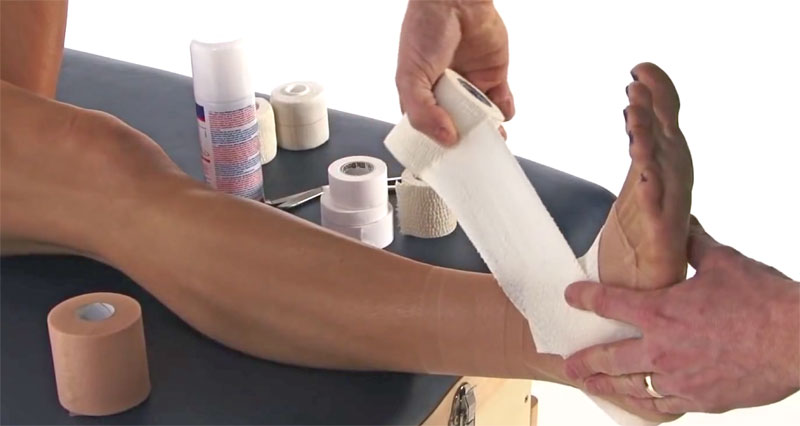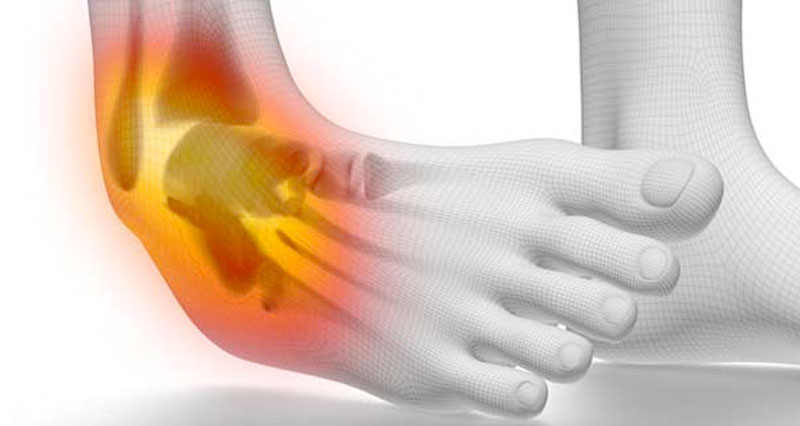Pain at the front of the ankle is known as anterior ankle pain. Sudden onset (acute) injuries include ankle impingement and high ankle sprains. A common cause of gradual onset anterior ankle pain is Tibialis anterior tendinopathy.
Tibialis anterior tendonitis/tendinopathy
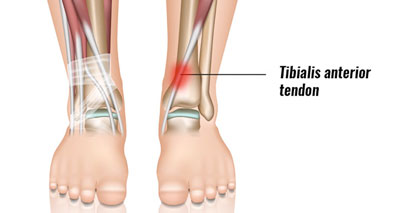
Tibialis anterior tendonitis/tendinopathy is inflammation, or more likely degeneration of the tendon of the Tibialis anterior muscle at the front of the ankle. Symptoms consist of:
- Pain pulling the foot and toes upwards, especially against resistance.
- Swelling and redness over the front of the ankle.
- Creaking when pressing into the tendon and moving your foot up and down.
More on Tibialis anterior tendinopathy
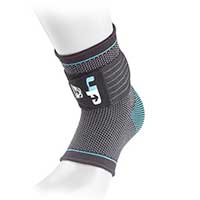
Buy Ankle Supports
Ankle Impingement
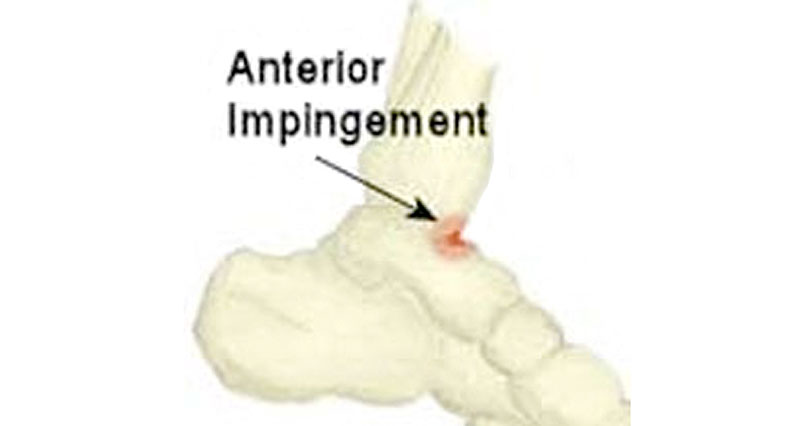
Ankle impingement occurs when a bony growth, called a spur, at the front of the ankle bone restricts normal movement. Soft tissue becomes trapped between the bones. It often follows an ankle sprain that hasn’t fully healed. Symptoms include:
- Pain at the front of the ankle (anterior ankle pain).
- In particular, pain is worse at maximum dorsiflexion, when your foot pushed up towards the shin.
- More on Ankle impingement
High Ankle Sprain
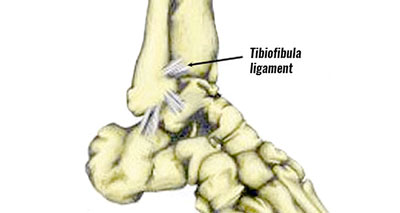
A high ankle sprain is a tear of the anterior tibiofibular ligament at the top of the ankle. It is often more severe than a common sprained ankle and difficult to treat. Symptoms of a high ankle sprain include:
- Pain at the front of the ankle, specifically over the tibiofibular ligament.
- Swelling or bruising.
- Difficulty walking.
Severe injuries also damage the membrane connecting the Tibia and Fibula (called the syndesmosis). Sometimes they occur with a fracture of one of the lower leg bones.
- More on High ankle sprain
Diagnosing anterior ankle pain
Your doctor or therapist performs takes a full case history to understand how your injury occured. This gives an initial idea of what your injury might be. Next they will see how your ankle moves and whether any specific movements trigger pain.
- Active movements – these are where you move your ankle yourself.
- Passive movements – this is where your therapist moves your ankle while you completely relax.
- Resisted movements – these are where you try to move your ankle whilst your therapist applies resistance.
Active and passive movements give an idea of range of motion and whether it is restricted in any way. Pain on active or passive movements may indicated impingement or ligament injury.
Resisted movements applied stress to muscles and tendons. Therefore, any symptoms reproduced during resisted movements may indicated injury to muscle or tendon. It is important to have a good understanding of ankle anatomy to successfully diagnose anterior ankle pain.

